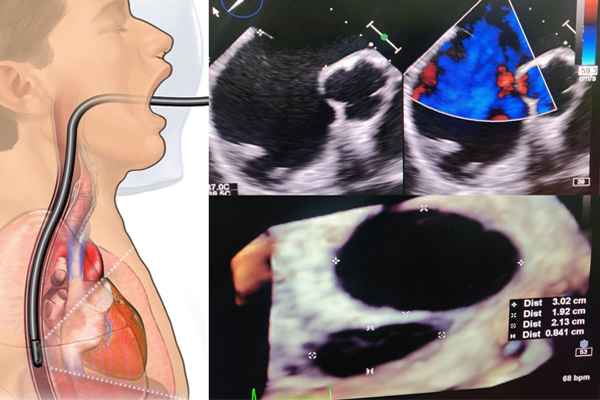2-D & 3-D Trans-oesophageal Echocardiogram (TEE)

2-D & 3-D Trans-oesophageal Echocardiogram (TEE)
Trans-oesophageal echocardiography (TEE) is an invasive procedure like endoscopy. A long slender probe (like a camera) is gradually introduced per mouth and placed into the feeding tube behind the heart. This probe then emits sound waves that are then reflected from the heart to create an image on the monitor. Being very close to the heart TEE produces excellent images with enhanced resolution that often help in delineating structures which would otherwise not be visible by an echocardiogram done from the chest.
The most important application of TEE in pediatric cardiology is intra-operative and post-operative assessment of congenital heart disease and valvular heart disease. It requires a great deal of skill and understanding of the cardiac anatomy to perform a per-operative TEE. The trans-oesophageal approach is also extremely useful for pre-procedural assessment of atrial septal defects in adults as well as to rule out infective endocarditis. In the present era, 3D-TEE is also available which helps immensely in planning of device closure of septal defects as well as para-valvar leaks.
TEE can be performed with reliable safety in both adults and children. The procedure can safely be performed in co-operative adults and adolescents using local anaesthesia in the throat. But in apprehensive patients as well as in smaller children often short-course intravenous sedation may be necessary. In experienced hands, it is a safe procedure with excellent diagnostic yield.
Copyright© Draritrapedcardio. All right reserved.
